|
text 
Natalija Šeruga Golob
SALVE REGINA III*
A letter to you, who accompany us everywhere with silent footsteps
(Can also be a song of praise to death)
All this ornamentation and celebration, loved ones, whose silent and saturated presence has been a source of support since time immaterial, is in your honour. Unstuck from time and from this space. My celebration (process of painting) is the building of a bridge to you and the painting material is a building block. Usually, my aspiration is painfully banal; this is when I demolish and tear down. Sometimes, very rarely, I manage to get close to you in the silence of the studio; and this is both beautiful and terrifying. Rilke writes "... and even if one of them pressed me suddenly against his heart: / I would be consumed in that overwhelming existence. / For beauty is nothing but the beginning of terror ..." (Rainer Maria Rilke: Duino Elegies – The First Elegy, translated by Stephen Mitchel, Vintage International, 2010).
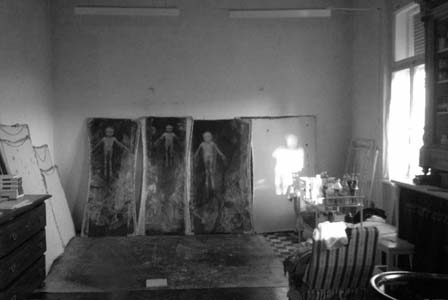
Studio, Radenci, 2017
The only thing possible for me is painting that is based on the ancient and the eternal within visual creation. Painting is a ritual;[1] a bridge between the real and the transcendental. Just scratching at the surface bores me and I have never really found my place in retinal[2] painting. My focused and confused painting work in the studio is a path from the known into the unknown, into the open. Painting, which is a sturdy bridge construction to you, the silent present ones, is also a striving and struggle without any clear goal and conclusion, it is the Ouroboros (uroborus),[3] where the retinal and the conscious swallows its tail, non-retinal and unconscious.
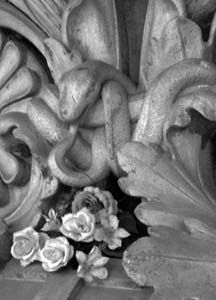
Ouroboros - Uroborus / Cemetery, Turin, Italy, 2018
In abundance–solitude, I sew the canvas with visible stitches onto a metal stretcher. In such a way, stirring the ancient and the old. I am a long way back, I sew animal skins as clothes, as shelter, for safety against the cold, in the face of the outside world. And I am at the same time now, I sew the canvas that is my shelter in the face of the surface of the everyday. Every time again in illo tempore.[4]
In an abundance-solitude, I nourish painting, which is consistent with the fundamental structure of the world, within which transformation remains a constancy and death is indispensable in its course and balance. Death as the condition of every new beginning. Since I remember, I have focused on time, transience and disintegration. I do not only depict this as a motif. In the recent years, time, transience and disintegration are becoming a part of my painting practice. I literally imbue the technology of painting with time, end, destruction. When the painting reaches a certain state but is not yet finished, I want to push it further, closer to you, the silent present ones. Yet I can not do this with the conscious will. Everything seems wistfully cheap. I am only left with the hope and faith in the (will)power of the material. The paint layer (pigment and binder) that I apply to the already (not yet) finished painting opens the doors and shows me the path beyond. I cover the painting almost entirely with a layer of paint, which I then remove in such a way that the material itself reveals or conceals certain parts of the painting. This is a step I can do in darkness or with eyes shut since I can not control it. I repeat the step until the painting surprises me, until I am stunned and I “get the creeping flesh”.[5] The feeling of mysterium tremendum[6] and of the numinous is stirred.[7] This is the path, when I know that the painting is becoming more real. The fortuity of the material creates more deeply, more fundamentally and closer to you (the silent present ones) than I ever actually wanted. The decision of what I can do with my brush and will, and what is produced by the fortuity of the material, is always fateful for the painting.
The destruction and disappearance of the image is present throughout the life of every painting. But in the process of painting, I can be the one who shrinks this time. I push the painting onward to a time closer to the end, closer to death. Transformation and destruction is not only a response to what is painted but also a response to how it is painted. The conscious speeding up of time in the life of the painting is my joy. I thus create a past future in the present within the paintings.
In abundance–solitude, time unsticks from me as well. I am a little girl burying small pictures on paper into the soil in the garden. I am digging small holes and placing little coloured papers in it, covering them with pieces of broken glass and burying them. There is something beautiful in the soil, in the burial.
In abundance–solitude, on the floor of the studio, I am a grown woman who is unburying paintings from the painting material. There is something beautiful in the soil, in the burial, in illlo tempore.
There is no mysticism,[8]
I claim blasphemously.
Translated by Arven Šakti Kralj Szomi
* Natalija Šeruga Golob: Salve Regina III, City Gallery Nova Gorica, February 2019.
Notes:
[1] The etymological origin of ritual is the Latin “ritus”, which denotes both ceremonies associated with beliefs related to the supernatural, as well as simple social customs, traditions and habits. Despite the differences in the semantic field of ritual, most anthropologists agree with the fact that ritual is a standardised, repeatable behaviour that occurs in a given space and at a given time. Durkheim linked ritual with religious belief, which presupposes the division of the real and the imaginary world into two poles: the sacred and the profane. This division into two parts is a distinctive feature of any religious thought. Despite the fact that the sacred and the profane represent two absolutely different realities, a transition can be made between them. Rituals are rules of behaviour that determine how man must behave in the presence of these sacred objects ... Rites, initiations, rituals allow the individual to leave the world of the profane in which he has lived until now and enter the domain of the sacred. Adapted from: Émile Durkheim: The Elementary Forms of the Religious Life, The Free Press, 1995 (Translated by Karen E. Fields).
[2] Retinal painting after Marcel Duchamp means merely the visual. Duchamp talks about retinal painting in an interview with James Johnson Sweeney (former director of the Guggenheim Museum) in 1956. Video of the interview: Marcel Duchamp interview on Art and Dada (1956) https://www.youtube.com/watch?v=DzwADsrOEJk
[3] Ouroboros (or uroborus) is a serpent eating its own tail. In the Coptic language, ouro means king, and in Hebrew, ob means snake. There are several explanations of the symbol. I understand the meaning of Ouroboros as stemming from the alchemical work of Michael Maier (1568–1622): Atalanta Fugiens (Atalanta Fleeing), Oppenheim, 1618. In the ring of Ouroboros, we can see two: the change and the return of time, as well as the beginning of alchemical work, in which it is necessary to ingest the most poisonous, moist tail of a snake. Once the snake is completely transformed, that is, once it has eaten itself, medicine grows from its poison. Confer: Alexander Roob, The Hermetic Museum, Alchemy & Mysticism, Taschen GmbH, 2001, pp. 400–429.
[4] I interpret the term in illo tempore with the help of Mircea Eliade. Mythical time or archaic-cosmic time can not be scientifically measured, but it is more or less defined by the natural cycles. Its true source is in illo tempore, therefore in the undetermined ancient times, which are revived by rites. Through the paradox of rite, every consecrated space coincides with the centre of the world, just as the time of any ritual coincides with the mythical time of the “beginning”. Through repetition of the cosmogonic act, concrete time, in which the construction takes place, is projected into mythical time, in illo tempore when the foundation of the world occurred. Confer: Mircea Eliade: Cosmos and History, The Myth of the Eternal Return, New York, Harper & Brothers, 1959, p. 20. (Translated from the French by Willard R. Trask.)
[5] Creeping flesh is meant as the first, primitive and coarse expression of numinous (sacred) horror. This particular dread of the uncanny, which is not an ordinary natural fear, but is already the first excitement and anticipation of the mysterious, produces a completely specific physical retroactive effect, which is not found in the case of any natural fear or terror: “My blood run icy cold”, “my flesh crept”, and so on, Rudolf Otto claims that creeping flesh represents something “supernatural” in this case. Confer: Rudolf Otto: The Idea of the Holy: An Inquiry Into the Non-rational Factor in the Idea of the Divine and Its Relation to the Rational, Pantianos Classics, 2012, p. 16. (Translated by John W. Harvey.)
[6] I interpret the term “tremendum” (mysterium tremendum) with the help of Rudolf Otto. Mysterium tremendum is a moment of the numen. The secret can already in itself be a “shuddering secret”. However, this is not necessarily so, both moments, tremendum and mysteriosum are different in themselves. The moment of the mysterious in the numinous can overcome “tremendum” in a religious experience and even eliminate it. Tremor is in itself merely fear, a feeling “naturally” known to everyone. Otto uses it as the closest yet analogous definition for an entirely specific emotional reaction that is similar to fear and can therefore be interpreted by analogy with it, which is nevertheless something completely different from ordinary fear. This is “fear”, which is more than fear. He cites that the Hebrew qādôsh means to sanctify and translates it as “heiligen”, to sanctify or fear. This fear, with which something is “sanctified in one’s heart” cannot be compared to any other type of fear and can therefore be evaluated with the category of the numinous. The Old Testament, the author writes, is full of related expressions for this sentiment. Interesting is the “emāt of Yahveh”, “the fear of God”, which is emanated by God and can be sent by him as a demon. The essence of horror is completely independent of the level of intensity. It can be so strong that it passes through the brain to make hair bristle and limbs quake, but it can also occur in a mild form of agitation and as a barely noticeable and gentle excitement of the soul. No natural fear can pass through it by being merely intensified. I can be struck by extreme anxiety, fear, horror, without there being the smallest trace of “uncanniness” in my emotion. Otto cites that which causes he numinous tremor orgé – the Wrath of Yahweh, which recurs in the New Testament as orge theoy. At the same time, this wrath clearly corresponds to the idea of the mysterious “ira deorum”, which we encounter in many religions. The unusualness of the “Wrath of Yaweh” has always stuck out. Otto writes about this wrath saying that in many instances of the Old Testament it has nothing to do with any natural properties in itself. It flares out and appears in a mysterious way, it is spontaneous and capricious. This wrath is not just “tremendum” itself, which is completely irrational. It is a feeling in religious life that is unusually repulsive, filled with horror, and disturbs those who want to acknowledge only goodness, kindness, love, reliability and only the moments of affection in God.
[7] Besides the Wrath or Anger of Yahweh, there is the related expression of Yahweh’s zeal. Rudolf Otto also uses the Greek word “deinos” from Antigone by Sophocles to explain terror. He translates it as “das Ungeheure”. Terrible is in this case used in a (connotative) sense, which is also indicated by the English dictionary, with the word ‘terrible’ also taking the meaning of “formidably great”. Therefore terrible, which is not only horrifying, but also beautiful. Repulsive and attractive at the same time. It is precisely this double, paradoxical characteristic that is essential to Otto’s understanding of the holy. The term “to deinon” is best suited to this “terrible”, which is “something powerful, magnificent, beautiful and terrible at the same time.” Adapted from: Rudolf Otto: The Idea of the Holy: An Inquiry Into the Non-rational Factor in the Idea of the Divine and Its Relation to the Rational, Pantianos Classics, 2012, pp. 13–54. (Translated by John W. Harvey.)
[7] Rudolf Otto devised the word numinous in his extensive work Das Heilige, Munich, 1917 (The Idea of the Holy: An Inquiry Into the Non-rational Factor in the Idea of the Divine and Its Relation to the Rational, Pantianos Classics, 2012, translated by John W. Harvey, pp. 5–17).
[7] Later on, Rudolf Otto writes that finding and recognising something as “holy” is in the first place a special valuation that exists in such a way only in the sphere of religion. When exploring the holy, Rudolf Otto looks for a special term to stand for the holy minus its moral factor or moment, as well as minus its rational aspect. What he is trying to explain at least in part, namely to translate into a feeling, lives in all religions as their most inner characteristic, without which there would not be a religion at all. However, it lives particularly violently in the Semitic religions, especially biblical ones. Here, qādôsh, has its own name, which corresponds to hagios, sanctus and sacer. In all languages, these names include “the good”, and good as such, namely, the good at the highest level of development and ripening of the idea, which is when the word “holy” can be used to translate them. But this “holy” in Otto’s case represents the gradual shaping and filling in with ethical meaning, or what we shall call the schematisation, of what was a unique original feeling-response, which can be in itself ethically neutral and claims consideration in its own right. And from the beginning, all these terms mean beyond all question something quite other than the good, the author claims. If we simply interpret qādôsh as good, it is in fact a rationalisation or reinterpretation of the term. Rudolf Otto finds a term for this moment that he will retain in his special use and that enables us at the same time to apprehend and classify connectedly whatever subordinate forms or stages of development it may show. For this purpose, he adopts numen. This word cannot be strictly defined as it does not possess any absolutely primary and elementary datum but it can only be explained. The reader must be guided and led on by elucidation until he reaches the point at which it begins to stir in his sentiment and in his consciousness. It cannot be taught, it can only be evoked, awakened in the mind – as everything that comes of the spirit must be awakened.
[8] I also interpret the word mysticism with the help of writer Rudolf Otto. The author cites that the word Mysterium, mystes, mysticism probably originate from the root still preserved in Sanskrit texts. The meaning here is dealing with the hidden, concealed, secret (which is why it preserves the meaning of stealing and scamming). Mysterium denotes merely that which is hidden in the sense of the unusual, which is beyond conception, unexplained. Genuine mirum is that “complete other”, thāteron, anyadalienum, aliud valde, alien and surprising, which came out of the sphere of the familiar, understood and known. Mystery without the moment of tremendum is mirable or mirum is surprise. Stupor is plainly a different thing from tremor, it signifies an astonishment that strikes us dumb. Even more accurate is thámbos, Gr. total stupor or “a bolt from the blue.”
[7] Mysterium is considered to be a surprise over the supernatural, irrational. The mysterious is what is and remains incomprehensible throughout and in any case. Confer Rudolf Otto: The Idea of the Holy: An Inquiry Into the Non-rational Factor in the Idea of the Divine and Its Relation to the Rational, Pantianos Classics, 2012, pp. 27–35. (Translated by John W. Harvey.)
[7] In my interpretation and perception of mysticism, I can not bypass the saying: »What we cannot speak about we must pass over in silence. (Translated by B. F. McGuinness and D. F. Pears)« “Wovon man nicht sprechen kann, daruber muß schweigen.” ― Ludwig Josef Johann Wittgenstein. And so, I argue that the basic philosophical truths can only be touched, merely indicated, left with a space in which to settle and reveal themselves of their own accord. Therefore, I only touch upon the mystical as the basic structure and leave it the space to reveal itself. Visual and verbal language can in no way and at no time overlap totally. By deconstructing the world into various meta-languages, we roughly define it and get to know it, as well as get closer to the knowledge of the world and thus knowing our own selves.
Non-retinal painting in illo tempore
|
|

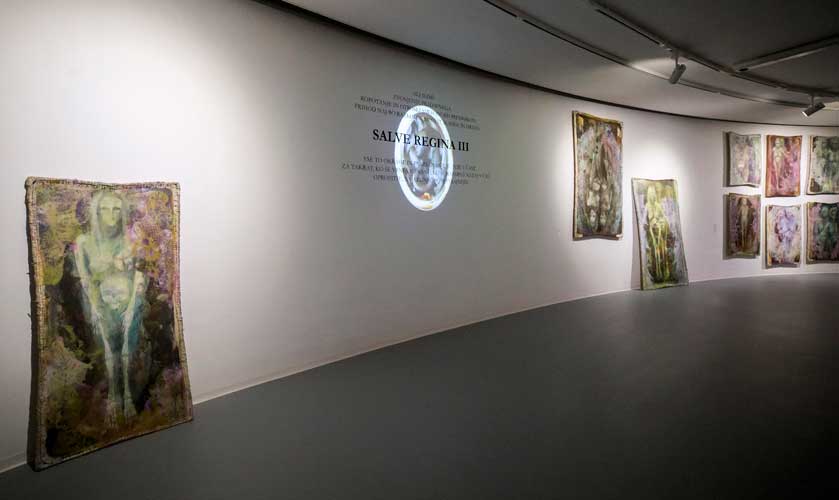 ...
...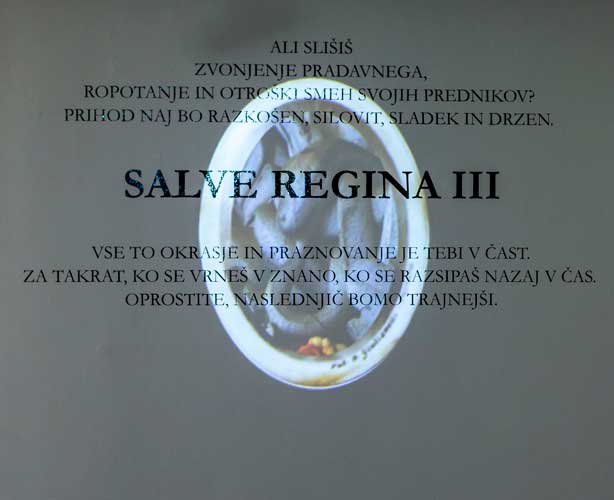 ...
...
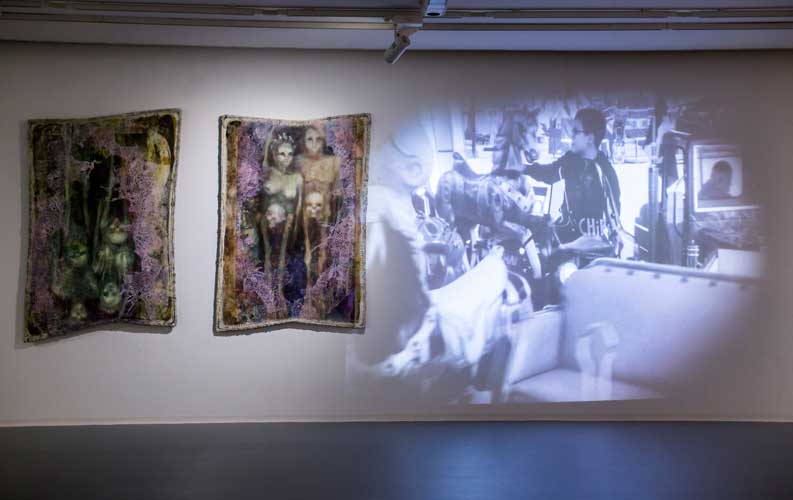 ...
...
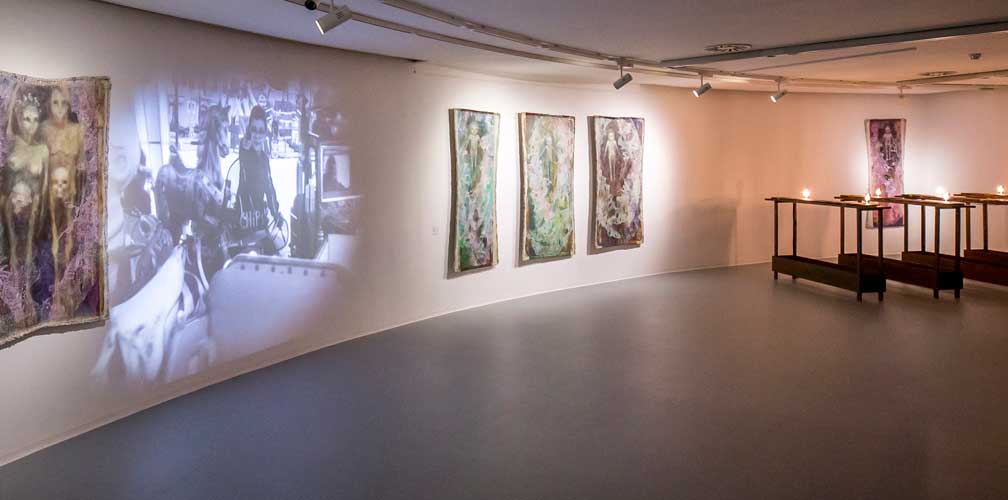 ...
...
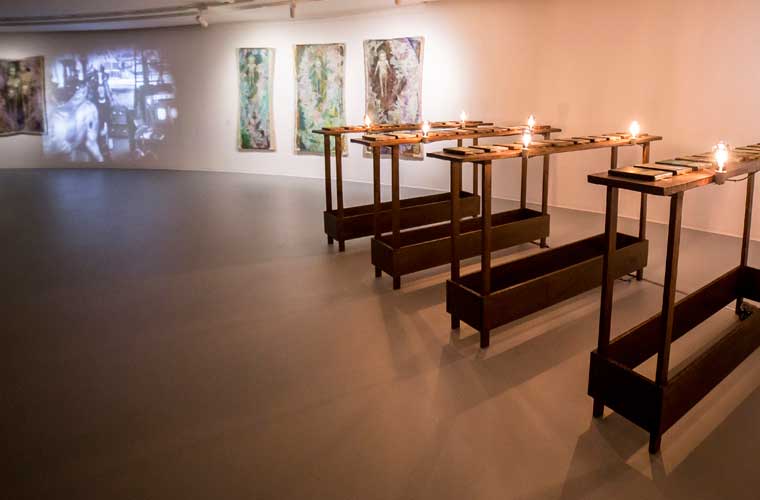 ...
...
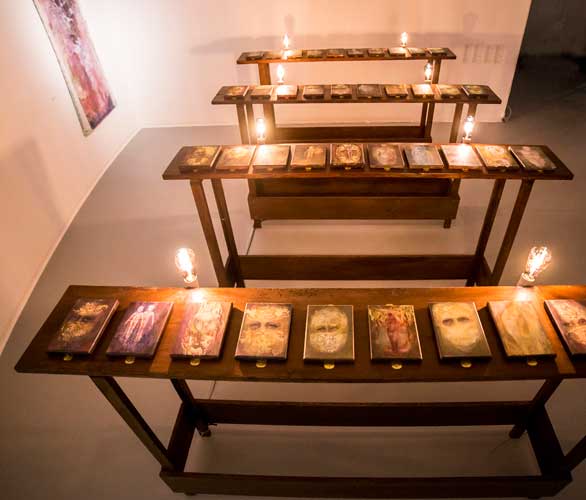 ...
...
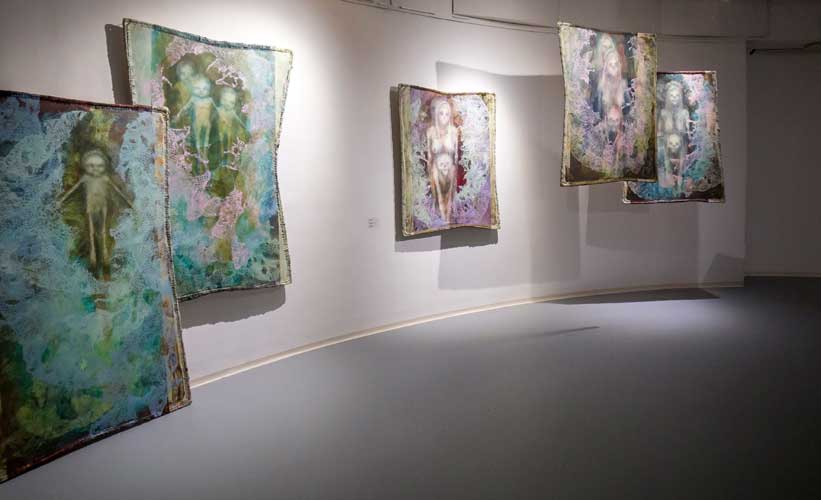 ...
...
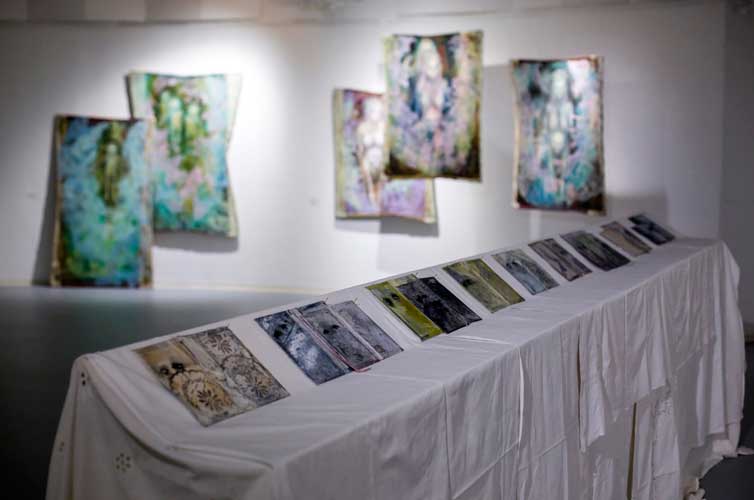 ...
...
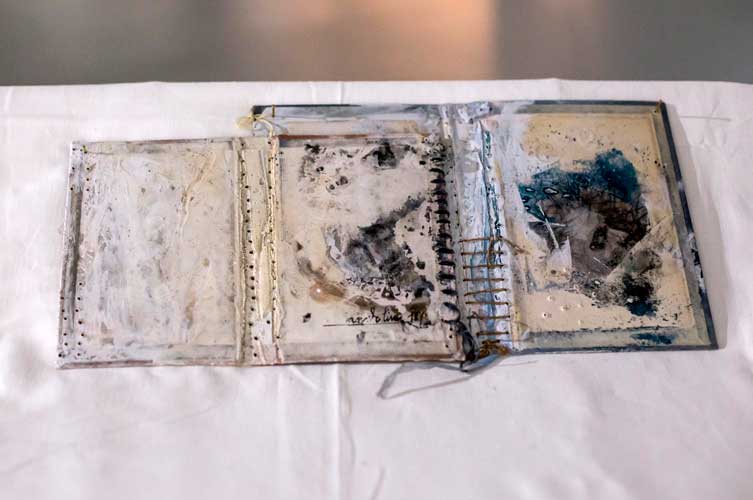 ...
...
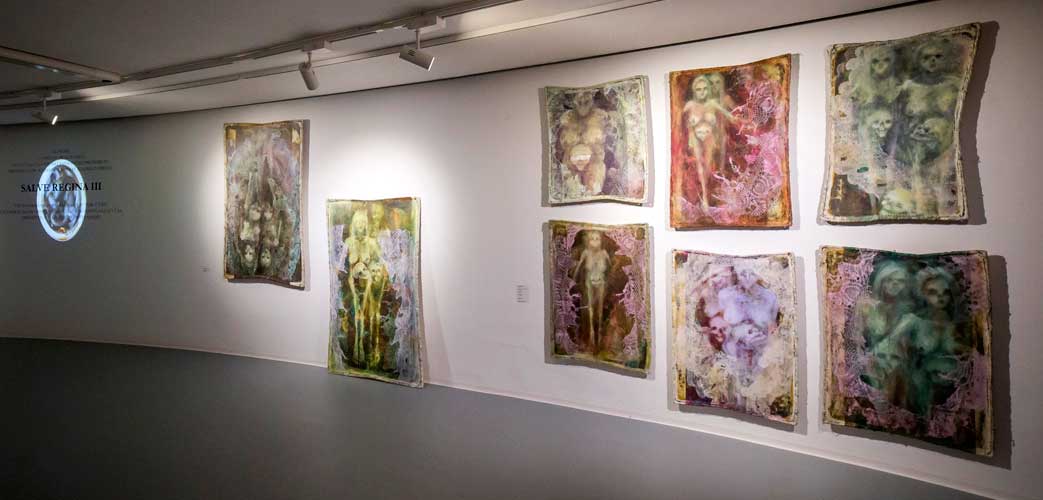 ...
...
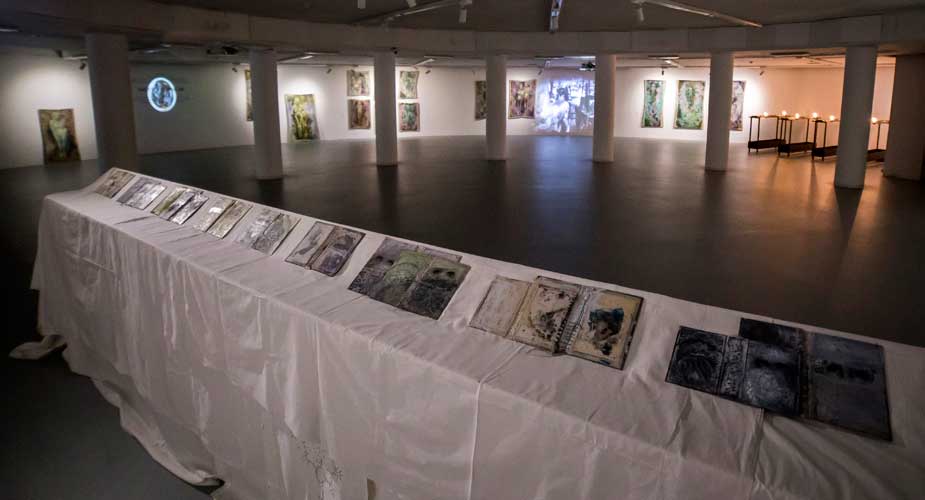 ...
...
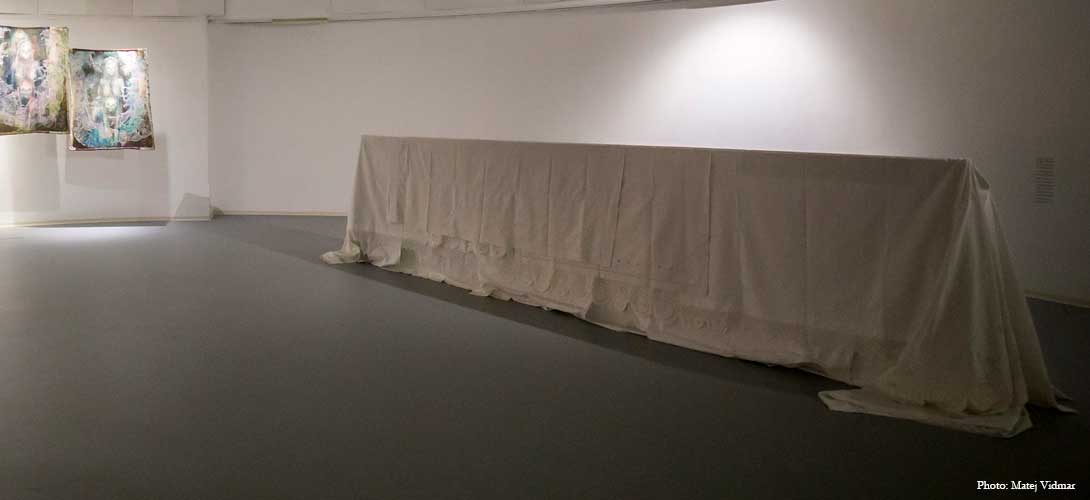 ...
...


